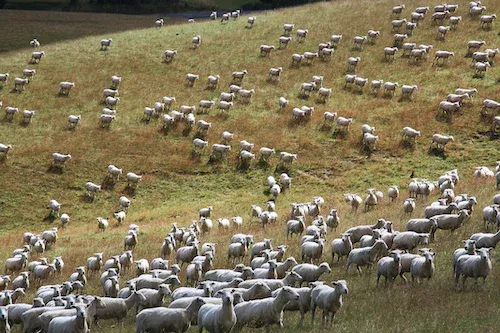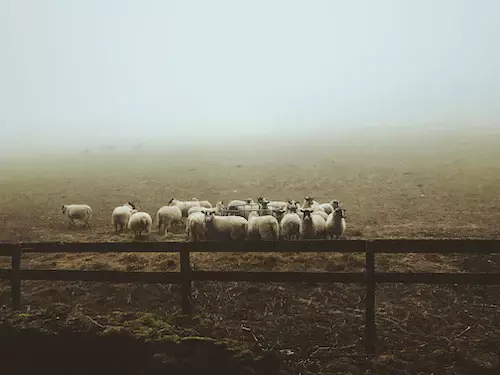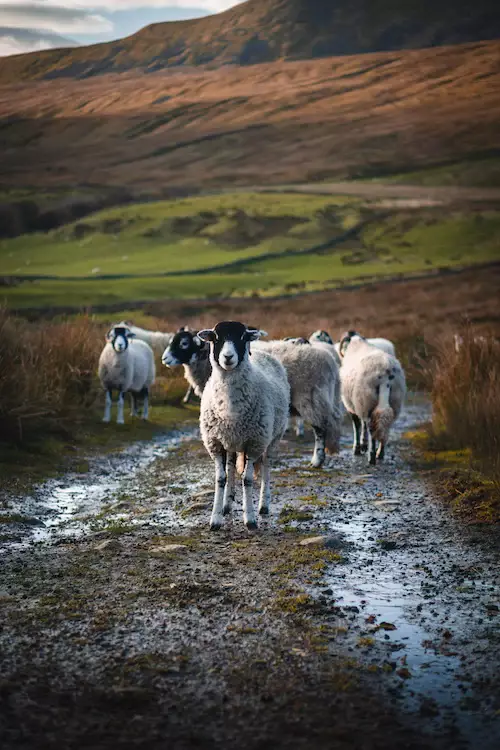How Many Sheep Per Acre in the UK & Ireland?
The UK and Ireland have a long history of pastoral farming, and the number of sheep that can be kept on each acre of land is an important part of managing these farms. In this article, we will explore the factors that influence the number of sheep that can be kept on one acre of land in the UK and Ireland.
The number of sheep per acre tends to be lower than in other areas of the world due to the smaller area of land available for grazing. However, in some parts of the UK and Ireland, it is possible to have a stocking rate of up to 10 sheep per acre. The stocking rate can be adjusted to accommodate the needs of the flock.
We’ll provide some guidance to help you determine the optimal number of sheep for your farm. Know the common practice of sheep farming in the UK and Ireland and the impact it has had on the environment.
Summary
- The number of sheep per acre in the UK and Ireland can vary widely depending on the type of land and the grazing needs of the flock.
- In both countries, the majority of sheep are found in the uplands and mountains, where they are used to maintain the landscape and biodiversity.
- The number of sheep in the UK and Ireland has been slowly declining in recent years due to factors such as disease, increased competition from other livestock, and changing consumer demands.

On this page:
An Acre of Land Can Have 10 Sheep in the UK and Ireland
In some parts of the UK and Ireland, it is possible to have a stocking rate of up to 10 sheep per acre. This is dependent on the type of soil within the area and the availability of pasture, as well as the ability of the landowner to manage and maintain the land.
The stocking rate that is possible is based on the land's ability to produce enough forage for the animals, as well as the type of pasture and the amount of grazing pressure on the land. If the land is overgrazed, then the stocking rate will not be able to be as high as 10 sheep per acre.
A stocking rate of 10 sheep per acre is an effective technique to optimize the quantity of wool, meat, and other sheep products generated from a given area. This may be a wonderful method to earn from sheep farming while also providing a good supply of food for local people.
At the same time, it is important to make sure that the land is managed correctly and that the animals are kept in good health and condition. This means making sure they are provided with the right food and water, as well as sheltering them from the elements.
Overview of Sheep Population in the UK and Ireland
Sheep have been an important part of the British and Irish agricultural landscape for centuries. In the UK, sheep farming is an integral part of the farming industry and accounts for around 6% of the agricultural output. The UK and Ireland have the largest concentration of sheep in Europe, with over 40 million animals. The UK is the third largest producer of sheep meat in Europe, behind France and Spain.
In the UK, the majority of sheep are found in England and Wales, with Scotland having the smallest number of sheep farms. The most common breeds of sheep in the UK are the Cheviot and the Texel, with other breeds such as the Welsh Mountain and the Dorset Horn also being popular.
In Ireland, the majority of sheep are found in the Republic of Ireland, with smaller numbers in Northern Ireland. The most common breeds are the Irish Mountain and the Galway, with other breeds such as the Clonmell and the Kerry Hill also being popular.
In recent years, the sheep population in the UK and Ireland has seen a decline due to increased mechanization of farming methods and a reduction in demand for traditional wool products. The number of sheep in the UK has dropped from over 30 million in 1984 to around 25 million in 2019.

Sheep Population Estimates in the UK and Ireland
The sheep population in the UK and Ireland is estimated to be around 35 million. This figure is based on the most recent data from the National Sheep Association in the UK, which is compiled every five years.
In the UK, the number of sheep is estimated to be around 26 million. This is down from 28 million in 2008. The majority of the sheep in the UK are found in Wales, which accounts for over half of the total population of 14 million. Scotland has the second highest number of sheep at 4.5 million, followed by England with 2.4 million.
In Ireland, the sheep population is estimated to be around 9 million. This is down from 10 million in 2008. Over half of the sheep in Ireland are found in the Republic of Ireland, with 4.5 million, followed by Northern Ireland with 4 million.
Factors that Impact Sheep Numbers in the UK and Ireland
The number of sheep in the UK and Ireland has been steadily declining for many years. This is due to some factors, both natural and man-made.
The UK and Ireland have experienced climate change
The UK and Ireland have seen a steady rise in average temperatures over the past few decades. This has caused more frequent and severe weather events, such as flooding, drought, and heat waves. These conditions can make it difficult for sheep to survive and thrive in these areas.
Sheep are vulnerable to some diseases, both infectious and non-infectious
Infectious diseases such as foot-and-mouth disease can cause significant losses in sheep numbers, while non-infectious diseases such as parasites can also have an impact.
Predation by wild animals can lead to significant losses in sheep numbers
Foxes are known to kill young and weak lambs, as well as adults, and can cause significant damage to the sheep flock. In the UK, foxes and badgers are controlled through legal culls and other management strategies, such as fencing or guard dogs. In Ireland, birds of prey are also controlled through legal means, such as the Falconry Act of 2009.
Too many sheep can quickly deplete the available grazing land
When too many sheep are kept in one area, they can quickly deplete the available grazing land, leading to a decrease in the number of sheep.
The farming industry in the UK and Ireland has seen a lack of investment for many years
In the UK, the sheep flock has decreased by over 20% since the 1990s, with the flock in Ireland falling by almost 50%. This decrease in sheep numbers has been attributed to some factors, including a lack of profitability in the industry, increased competition from other farming sectors, and changes in agricultural policy.

Managing Sheep Numbers in UK and Ireland
A major issue in managing sheep numbers is overgrazing, which can lead to soil erosion, loss of vegetation and habitat, and disruption of water supplies. In addition, the UK and Ireland have both introduced a system of subsidies and grants to encourage sustainable sheep farming practices, such as rotational grazing and the use of electric fencing.
The UK and Ireland also have schemes in place to monitor and manage sheep numbers, such as the National Sheep Scheme in the UK and the Sheep Management Initiative in Ireland.



